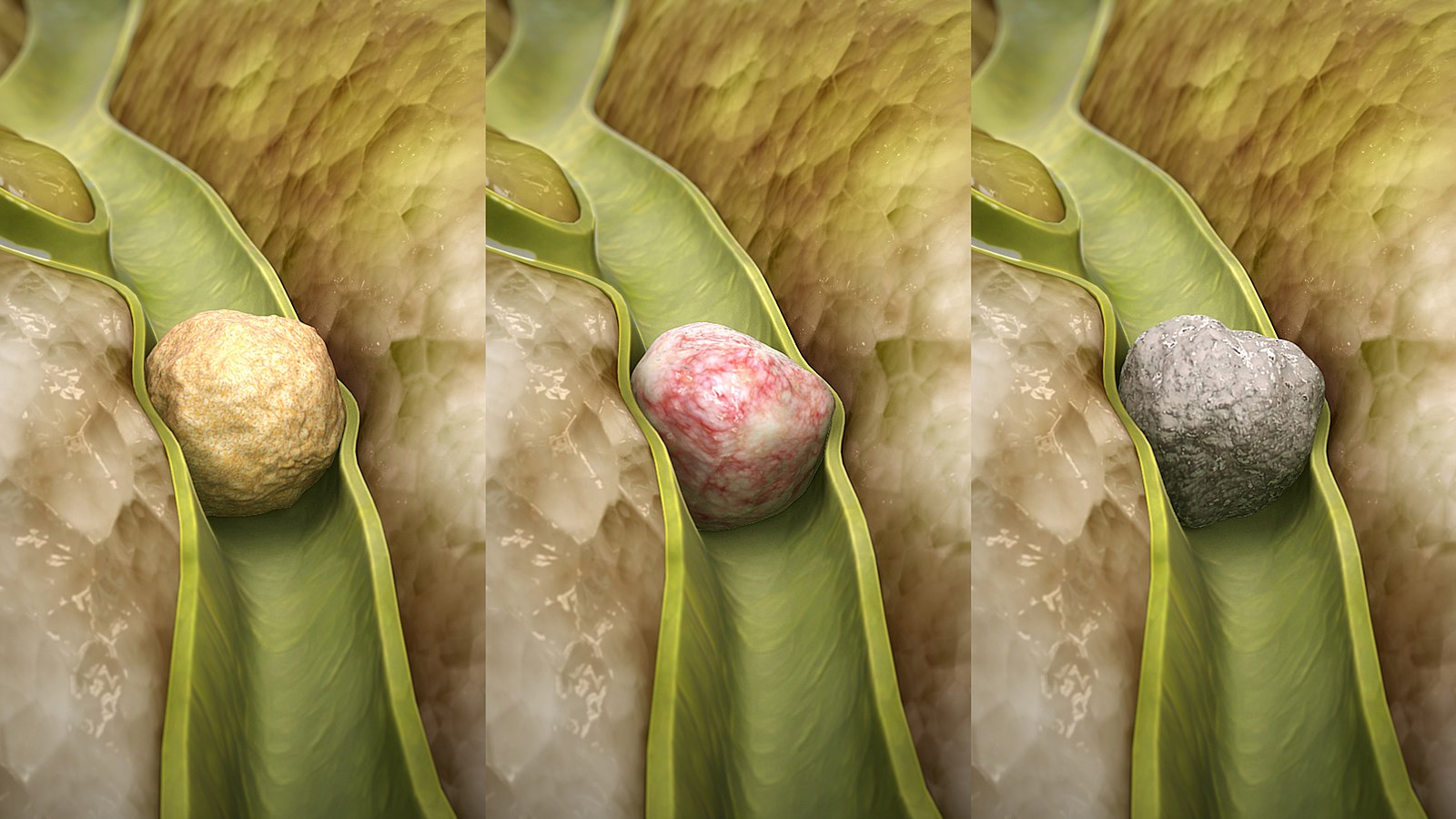Difference Between Gallstones and Appendicitis
Gallstones are deposits called choleliths that are created in the gallbladder from bile or fat. Appendicitis is an inflammatory reaction of the appendix.

What is Gallstones?
Definition:
Gallstones are cholesterol or bile salt deposits that form stones, known as choleliths, in the gallbladder.
Symptoms:
Mild cases of gallstones may present asymptomatically but for many people choleliths cause problems, particularly if they block the duct that leads from the gallbladder to the duodenum. A blocked duct from a stone causes an inflammatory response known as cholecystitis resulting in signs such as bloating of the gut, nausea and vomiting, severe upper right quadrant abdominal tenderness, and pain radiating through to the upper back region.
Causes and risk factors:
A high fat, high cholesterol diet is believed to increase the incidence of gallstones. Other risk factors include being overweight or having sudden changes in weight. Being a woman and middle-aged also seems to increase gallstone risk. Diet, liver problems, and hormones can cause gallstones. Having the appendix surgically removed has also been linked to an increased risk of gallstones possibly due to inflammation and the spread of bacteria.
Diagnosis:
Diagnosis is confirmed by an ultrasound exam of the gallbladder after a doctor takes note of symptoms suggestive of the problem.
Treatment:
The preferred treatment option is to take out the troublesome gallbladder during alaparoscopic cholecystectomy which is a less invasive surgery than an open cholecystectomy where the abdomen is cut open to remove the gallbladder.
Complications:
Blockage of the bile duct can lead to dangerous infection and jaundice (yellowing of the skin). The condition can also on rare occasion cause an inflamed pancreas (pancreatitis).

What is Appendicitis?
Definition:
Appendicitis is the condition in which the appendix becomes inflamed.
Symptoms:
The classic symptom of an appendicitis is pain that occurs in the right lower quadrant of the abdomen. It is important to note that appendicitis pain often begins in the stomach region and then moves to the right side becoming localized and then quickly increasing in severity. Nausea, vomiting and low-grade fever may also be present.
Causes and risk factors:
The cause of appendicitis is most often stool or mucus that has become trapped in the appendix causing inflammation and bacterial overgrowth. People younger than age 30 are at highest risk of appendicitis and it is more common in males than females. It is a common cause of acute abdominal pain in teenagers.
Diagnosis:
Most commonly the diagnosis is based on the clinical signs and pain at McBurney’s point, a specific location on the right side of the abdomen. Imaging such as CT scan or ultrasound can be done to confirm an inflamed appendix.
Treatment:
Appendicitis needs to be treated with an appendectomy, which is a surgery to remove the appendix. A laparoscopic appendectomy is the recommended surgical procedures as it is less invasive and easier for patients to recover from than an open appendectomy. In some cases, an open procedure may be necessary, particularly if the appendix has already ruptured.
Complications:
A dangerous complication of appendicitis is rupture of the organ. If the appendix ruptures it spreads bacteria throughout the abdomen leading to peritonitis, which in turn can cause death.
Difference between Gallstones and Appendicitis?
Definition
Gallstones can be defined as a condition in which choleliths that are comprised of bile and cholesterol form in the gallbladder. Appendicitis is the condition in which the appendix of the large intestine becomes inflamed.
Symptoms
A classic sign of gallstones is pain in the upper right abdomen that spreads into the back, along with nausea and vomiting. A classic sign of appendicitis is pain beginning in the middle of the abdomen and spreading to the lower right part of the abdomen to McBurney’s point; nausea, vomiting, and fever may be present.
Causes
Gallstones can be caused by a combination of factors such as too much fat in the diet and using hormone replacement medicine. Appendicitis occurs because mucus or stool becomes trapped in the organ leading to inflammation.
Diagnosis
The diagnosis of gallstones is by ultrasound along with a physical exam. The diagnosis of appendicitis is often just from a clinical exam, but sometimes CT scans and ultrasound are also done.
Treatment
The best treatment for gallstones is usually a laparoscopic cholecystectomy in which the gallbladder is removed. The treatment for appendicitis is also usually surgery, most commonly a laparoscopic appendectomy is done.
Complications
Untreated gallstones can cause infection, inflammation, and even pancreatitis. In the case of appendicitis, a common and dangerous complication is rupture of the appendix leading to infection and sepsis.
Table comparing Gallstones and Appendicitis

Summary of Gallstones Vs. Appendicitis
- Gallstones and appendicitis both usually require surgical intervention.
- Gallstones form from bile salts and cholesterol molecules.
- Appendicitis occurs when stool or mucus causes the appendix to be inflamed.
- Appendectomy may increase the risk for gallstone formation later on.
- Difference Between Rumination and Regurgitation - June 13, 2024
- Difference Between Pyelectasis and Hydronephrosis - June 4, 2024
- Difference Between Cellulitis and Erysipelas - June 1, 2024
Search DifferenceBetween.net :
Leave a Response
References :
[0]Ansari, Parswa. “Appendicitis.” Merckmanuals. Merck & Co., 2020, https://www.msdmanuals.com/professional/gastrointestinal-disorders/acute-abdomen-and-surgical-gastroenterology/appendicitis
[1]Lindenmeyer, Christina. “ Cholelithiasis.” Merckmanuals. Merck & Co., 2020, https://www.merckmanuals.com/en-ca/professional/hepatic-and-biliary-disorders/gallbladder-and-bile-duct-disorders/cholelithiasis?query=Gallstones
[2]Mayo Clinic. “Gallstones.” Mayo Clinic. Mayo Clinic, 2021, https://www.mayoclinic.org/diseases-conditions/gallstones/symptoms-causes/syc-20354214
[3]Image credit: https://commons.wikimedia.org/wiki/File:Types_of_Gallstones.jpg
[4]Image credit: https://commons.wikimedia.org/wiki/File:Depiction_of_a_person_suffering_from_Appendicitis.png
